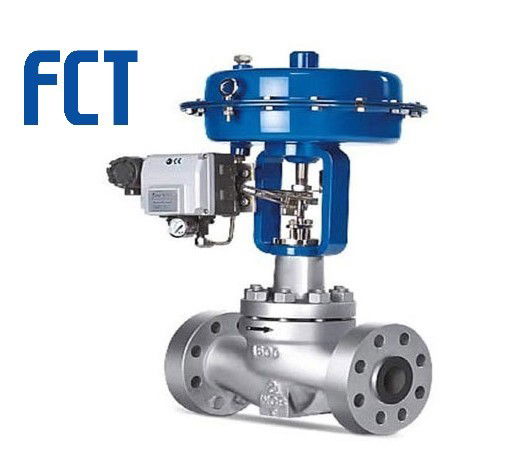Understanding the Significance of Control Valves in Process Automation
Understanding the Significance of Control Valves in Process Automation
Blog Article

Maximize Energy Savings and Comfort With Advanced Building Automation Controls
In the realm of modern style and facility monitoring, the combination of innovative building automation regulates stands as a crucial development. By harnessing the power of automation, structures can adapt, respond, and progress in means that were once unbelievable.
Energy Effectiveness Conveniences
Energy efficiency benefits can substantially minimize energy consumption and operational prices in structures. Energy-efficient systems, such as advanced structure automation controls, can enhance the use of sources like lights, cooling, and home heating, leading to lower power expenditures over time.
Furthermore, boosted energy efficiency can prolong the lifespan of building equipment and systems. By operating much more efficiently, a/c systems, lighting fixture, and various other structure elements experience much less deterioration, causing decreased upkeep and replacement prices. Additionally, energy-efficient structures typically command greater building values and rental rates, giving long-term monetary advantages to owners.
Additionally, power efficiency can enhance resident convenience and performance. Correctly controlled interior environments with optimum illumination and thermal problems create an even more enjoyable and helpful work space, resulting in improved employee fulfillment and efficiency. Overall, the energy efficiency benefits related to sophisticated structure automation controls are complex, encompassing cost savings, environmental stewardship, and occupant well-being.
Enhanced Comfort Control
Enhancing comfort control in building environments requires an advanced integration of innovative automation systems for optimum owner health. By making use of innovative structure automation controls, centers can customize the interior atmosphere to satisfy the particular requirements and choices of passengers. These systems make it possible for specific regulation of air flow, illumination, and temperature, developing a productive and comfortable ambience. Owner satisfaction and performance are carefully linked to thermal convenience, making it vital to have systems in area that can adapt to transforming conditions in real-time.
Boosted convenience control goes beyond standard temperature adjustments. It includes attributes such as individualized setups, occupancy sensing units, and all-natural light utilization to produce a vibrant and responsive setting. By incorporating these sophisticated controls, structures can not only improve convenience but additionally improve power performance by enhancing system operations based on actual occupancy and use patterns. Eventually, prioritizing owner convenience with advanced automation systems leads to a much more satisfying and healthier interior setting.
Operational Effectiveness Improvements

Additionally, the application of real-time surveillance and analytics tools enables building drivers to recognize energy ineffectiveness and operational anomalies immediately. By constantly checking energy usage patterns and system performance metrics, changes can be made in real-time to enhance power consumption and make certain peak operational performance. control valves. Furthermore, incorporating need feedback methods into structure automation controls can additionally enhance functional effectiveness by dynamically adjusting power use based on grid problems and prices signals
Indoor Climate Optimization
Reliable indoor environment optimization is an essential aspect of building automation controls, ensuring occupants' comfort and well-being while taking full advantage of power savings. By utilizing advanced sensing units and controls, constructing automation systems can continuously check and adjust temperature, humidity degrees, air top quality, and air flow to develop an optimal indoor setting. Maintaining comfy and consistent problems not only enhances owner fulfillment but additionally improves efficiency and overall health.
Interior environment optimization also plays an essential role in energy effectiveness. By fine-tuning heating, air flow, and cooling systems based upon real-time data and occupancy patterns, building automation controls can substantially minimize energy consumption - control valves. For example, implementing strategies such as demand-controlled air flow and thermal zoning can assist lessen energy waste while ensuring that each area of the navigate here structure receives the necessary conditioning.

Sustainable Atmosphere Creation
Building automation manages not just optimize interior climate problems for power performance and resident convenience however additionally lay the foundation for developing a sustainable setting with strategic monitoring of systems and sources. By incorporating advanced building automation technologies, such as sensing units, actuators, and intelligent software application, facilities can keep track of and adjust power use in real-time to decrease waste and reduce their carbon footprint. These systems make it possible for predictive maintenance, determining possible concerns before they escalate and enhancing tools performance to enhance longevity and performance.
Moreover, lasting atmosphere development prolongs beyond power management to encompass water conservation, waste reduction, and interior air quality renovation. Structure automation controls can control water use, discover leaks, and make certain correct garbage disposal practices, contributing to general sustainability efforts. Furthermore, by checking and controlling ventilation and filtering systems, these technologies improve occupant health and wellness and productivity while reducing power consumption related to HVAC procedures.
Final Thought
To conclude, progressed structure automation manages offer substantial benefits in terms of power financial savings, convenience control, functional effectiveness, interior environment optimization, and producing a sustainable environment. By implementing these controls, structures can accomplish ideal performance while decreasing find more energy consumption and boosting owner convenience. It is noticeable that the usage of innovative automation modern technology is crucial in enhancing building efficiency and developing a much more lasting future.
Energy efficiency benefits can considerably minimize power usage and functional expenses in buildings. In general, the power performance benefits associated with advanced structure automation controls are diverse, incorporating cost financial savings, environmental stewardship, and owner wellness.
In addition, including need response approaches right into structure automation controls can further enhance operational effectiveness by dynamically changing power use based on grid conditions and pricing signals.
Building automation manages not only enhance interior climate conditions for power performance and owner comfort yet click for info also lay the structure for producing a sustainable environment via calculated monitoring of resources and systems.In conclusion, progressed building automation manages deal considerable advantages in terms of energy financial savings, convenience control, functional efficiency, indoor climate optimization, and creating a sustainable environment.
Report this page